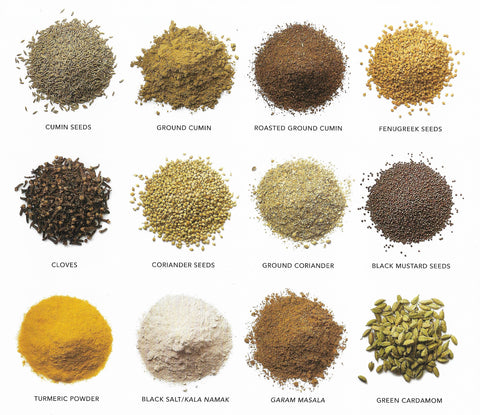The 5 Top Secrets to Making Incredible Indian Food in Your Slow Cooker (Crockpot)

Indian food is known for its endless depth of flavors. It is easy, quick and you don't even have to go to your neighboring Indian restaurant for the kick-ass meals you've been wanting. Give your delivery app a break, put on those Chef's Satchel aprons and let's get cooking!
What is all the buzz about slow cooker and why should you care?
Slow cookers are an easy problem solver for those who do not always have the luxury of time and need some fabulous food ready without having to be present in front of the stove at all times. The slow cooker works like a stove top. With the elements being placed on the bottom, the heat works its way from the bottom on to the sides of the pot and ultimately into the food. With low and steady temperatures, the moisture released from the food is retained in the pot. The liquid does not evaporate nor does it make it concentrated.

List of Indian spices you need to have in your pantry at all times.
1) Cumin seeds
Cumin is by-far the best-kept secret in the Indian kitchens. Cumin seeds are widely used in a lot of the Indian cuisine. But one very important thing to keep in mind is for you to use cumin seeds than the ground form you find in the grocery stores. Seeds tend to retain the flavors for a long long time.
2) Cloves
This tiny spice packs in a world of flavor. Due to its versatility, it can be used in a variety of foodstuffs such as tea, rice as well as pickling meats or vegetables. It can be used to reduce soreness for a toothache you may have. Just bite down on one clove with the teeth that are affected until the pain subsides.
3) Coriander
Coriander seeds are widely used not only in Indian cuisine but a variety of other countries. Again, make sure to get the coriander seeds rather than the ground powder. Simply dry roast some seeds in the pan and grind it. You will know the difference.
4) Cardamom
Cardamom is a chaiwalla's best friend (tea stalls often found on Indian streets). They are widely used in a lot of Indian households for marination or straight addition to the food while tempering the oil. These are also used as a mouth freshener after having a garlic or onion dominant dish.
5) Garam Masala
This consists of a spice mix of a variety of common spices such as coriander, cumin, cloves, cardamom, black pepper, cinnamon, and nutmeg. You can choose to make this at home or this mix is readily available in the market for purchase.
Indian food takes a little understanding. it's like putting the pieces to the puzzle. Once you understand the basics, the sky is the limit.
5 Best kept secrets to making incredible Indian food in a slow cooker
1) Use fresh ground spices
When filling your pantry with spices, make sure to purchase whole seeds rather than the pre-ground powder available in your grocery store. Seeds are packed with the oils and a whole lot of flavor which is released upon dry roasting them for a few minutes in a hot pan and eventually grinding it. You may do it as per use or grind enough for the week.
2) Start with the simple recipes
Cooking Indian food can be really intimidating for some. It doesn't mean it isn't possible. There is a whole lot of different recipes out there. Start with the simplest of the recipes to get a bit of practice working your way up to some that might require some time.
3) Temper the spices
A great way to save some time is to pre-heat your slow cooker. Pre-heating the slow cooker not only helps with the proper tempering of the spices but also helps get a head start on speeding up the process which may result in saving those precious 15 to 20 minutes of your overall cooking time. Tempering spices help release those essential aromas as well as the oils from the spices which enhances the taste to a great extent.
4) Pre-soaking your grains and legumes (avoid canned legumes)
A little planning goes a long way. With that being said, rinsing your legumes and grains till the water runs clear as well as soaking them a night before. This will result in cooking the legumes faster. Avoid canned beans and legumes since they contain a certain amount of preservation. They are also soaked in a liquid which when emptied and drained, still do contain a lot of liquid which may result in loss of flavor in your dish as well as resulting in mushy food.
5) Mise-en-Place
As overused this term is, it is very important from a chef's as well as a home cook's prospect. The quickest way to get all of your food into a pot is to have all of your prep done in advance or have everything ready before starting to make your dish. This especially applies to Indian cooking. There are quite a few steps involved in Indian cooking which may be - preparing the ginger garlic paste to marinades for meats with those lovely fresh ground spices. All this may be time-consuming. But once you're set to go, it is as easy as it can get.



